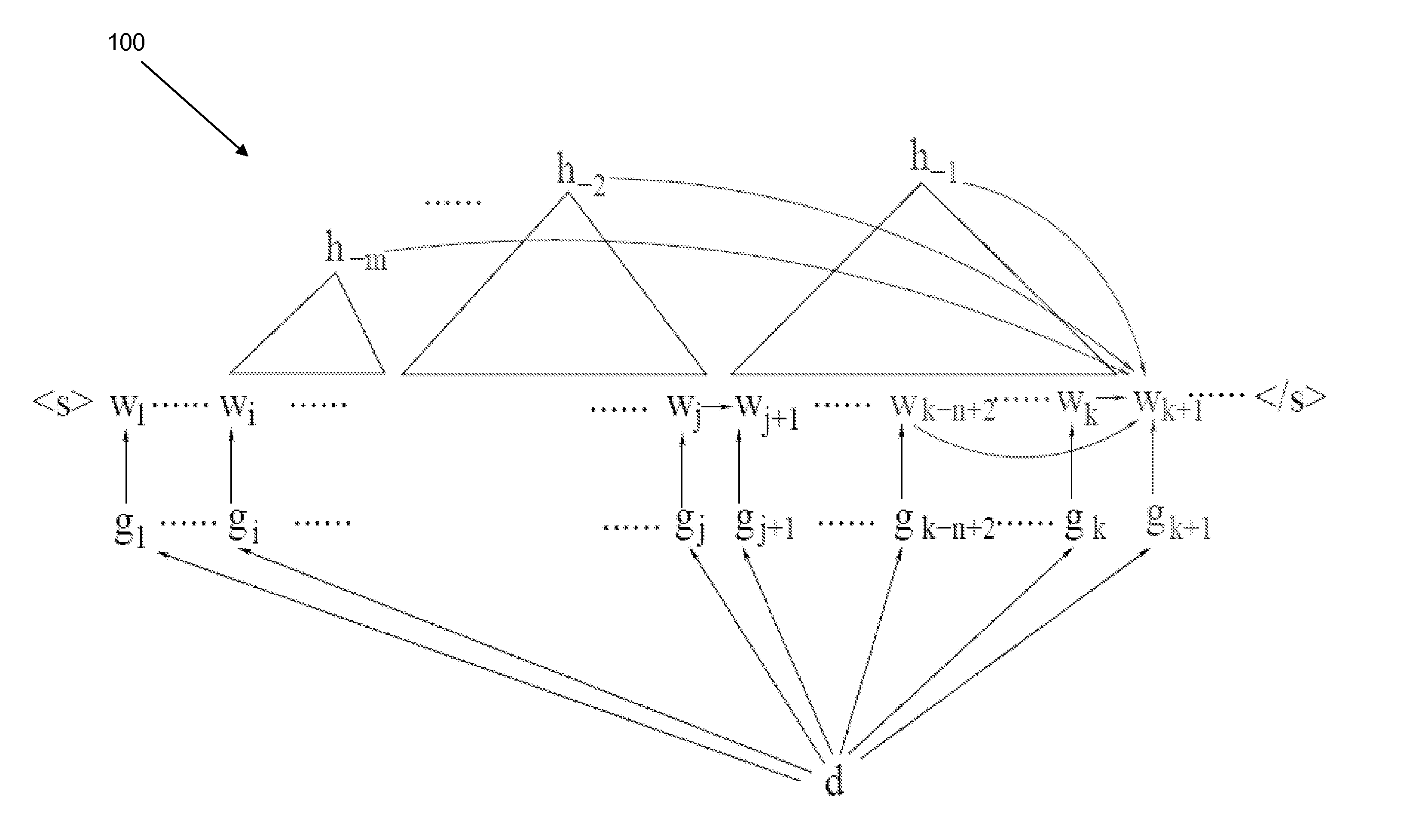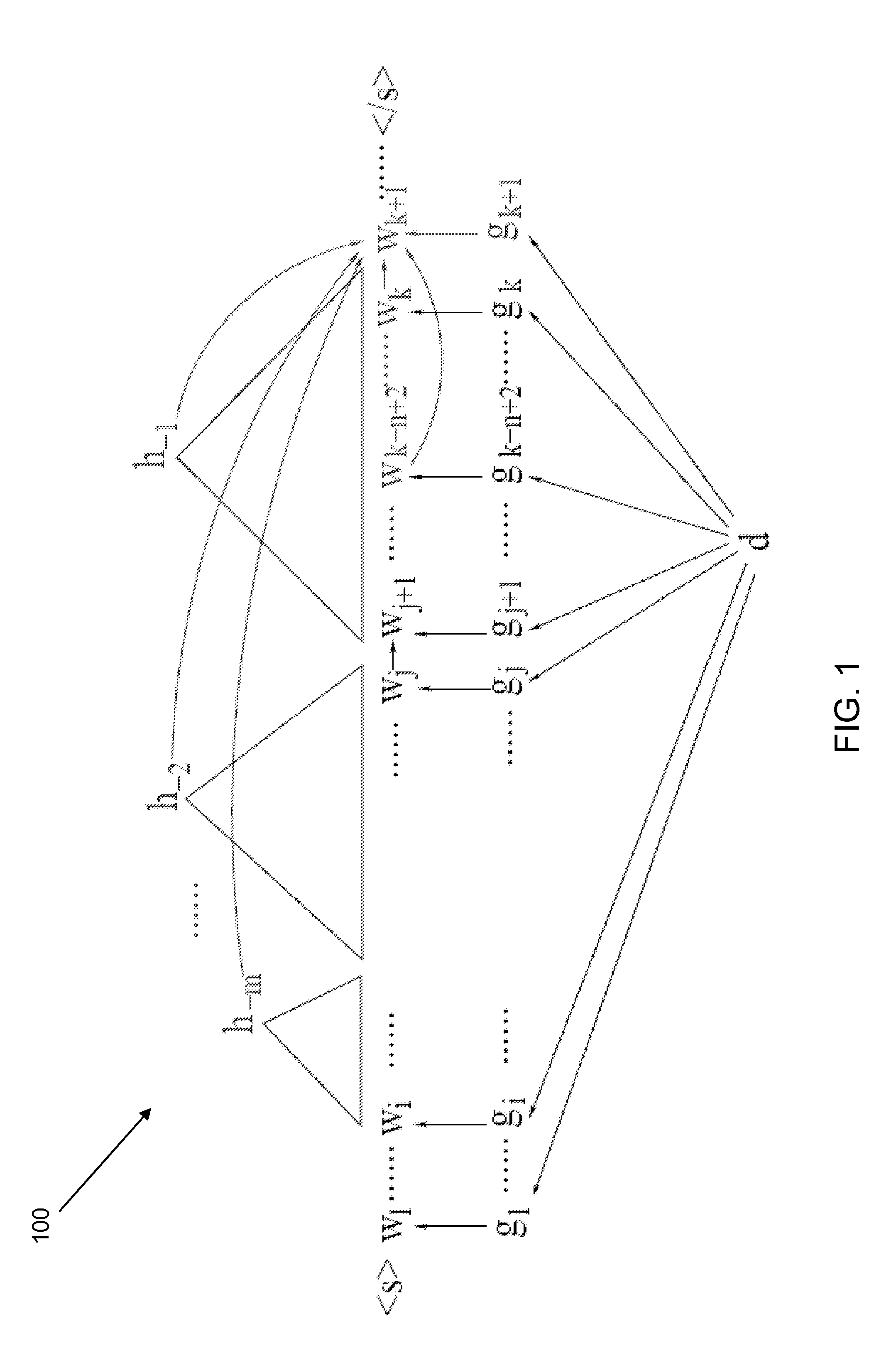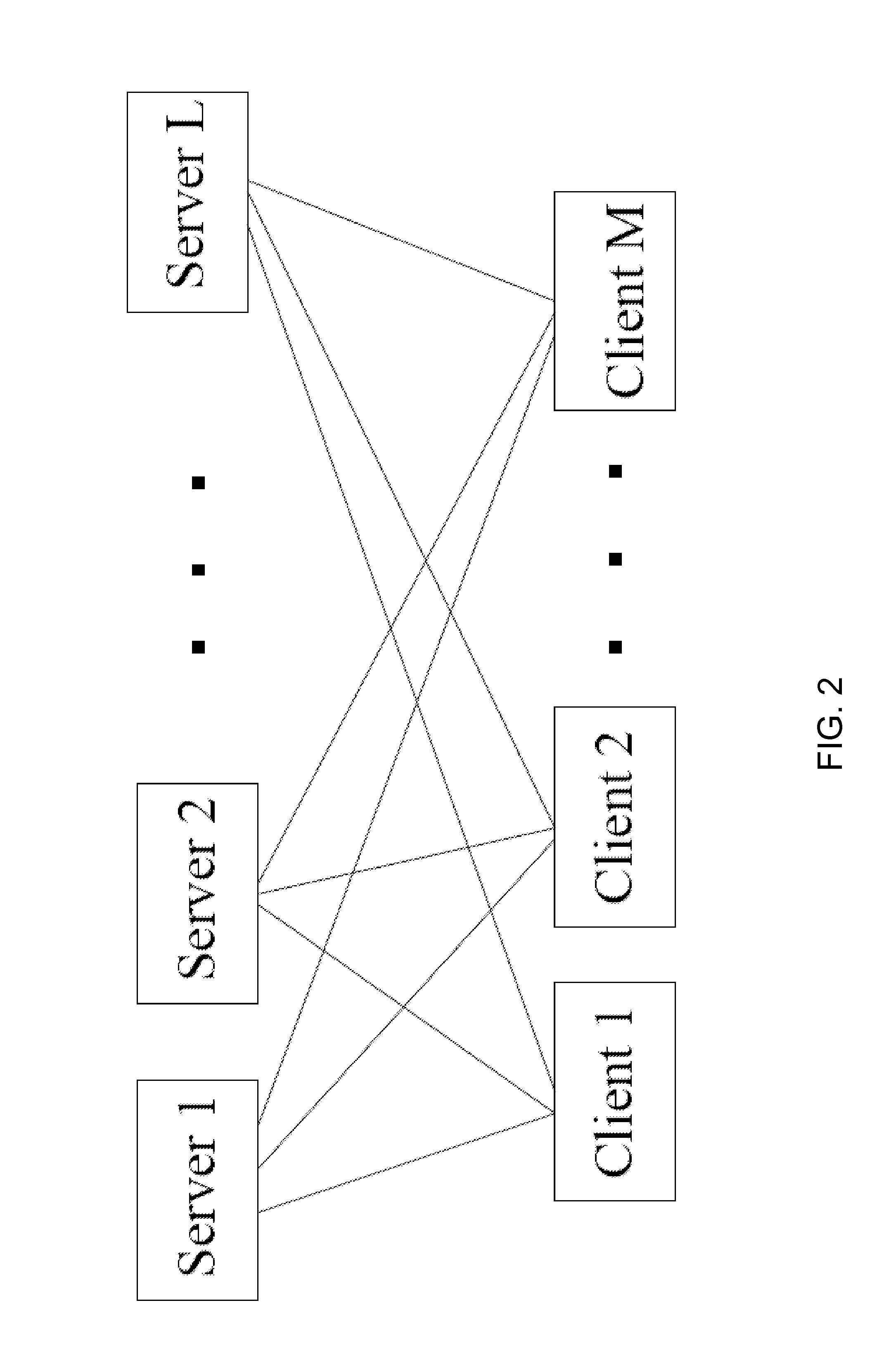Large Scale Distributed Syntactic, Semantic and Lexical Language Models
a language model and large-scale technology, applied in the field of language models, can solve the problems of limited success in combining these language models, and previous techniques for combining language models often make unrealistic strong assumptions
- Summary
- Abstract
- Description
- Claims
- Application Information
AI Technical Summary
Benefits of technology
Problems solved by technology
Method used
Image
Examples
Embodiment Construction
[0010]According to the embodiments described herein, large scale distributed composite language models may be formed in order to simultaneously account for local word lexical information, mid-range sentence syntactic structure, and long-span document semantic content under a directed Markov random field (MRF) paradigm. Such composite language models may be trained by performing a convergent N-best list approximate Expectation-Maximization (EM) algorithm that has linear time complexity and a follow-up EM algorithm to improve word prediction power on corpora with billions of tokens, which can be stored on a supercomputer or a distributed computing architecture. Various embodiments of composite language models, methods for forming the same, and systems employing the same will be described in more detail herein.
[0011]As is noted above, a composite language model may be formed by combining a plurality of stand alone language models under a directed MRF paradigm. The language models may i...
PUM
 Login to View More
Login to View More Abstract
Description
Claims
Application Information
 Login to View More
Login to View More - R&D
- Intellectual Property
- Life Sciences
- Materials
- Tech Scout
- Unparalleled Data Quality
- Higher Quality Content
- 60% Fewer Hallucinations
Browse by: Latest US Patents, China's latest patents, Technical Efficacy Thesaurus, Application Domain, Technology Topic, Popular Technical Reports.
© 2025 PatSnap. All rights reserved.Legal|Privacy policy|Modern Slavery Act Transparency Statement|Sitemap|About US| Contact US: help@patsnap.com



